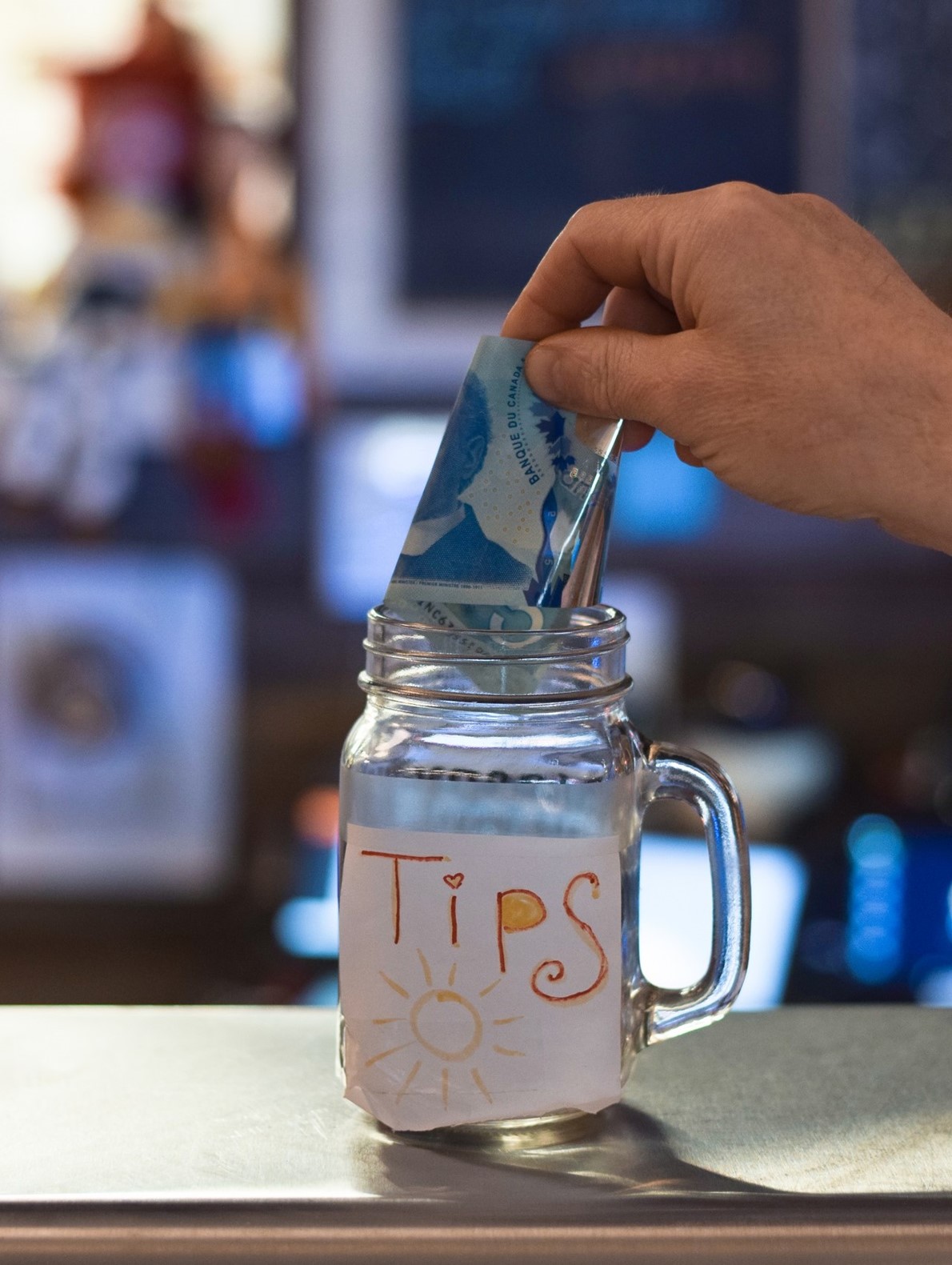Last year, Anna Johnson found herself using an electronic screen to pay for a pickup order at a bakery in Phoenix, a normal enough experience at many food businesses she frequents. But this time, she was bewildered when the machine recommended that she tip as much as 35% — on cookies.
اضافة اعلان
“It just surprised me that they’re asking everyone for that,” said Johnson, 66. “People can’t afford to keep on paying more, more and more.”
Tipping fatigue like Johnson’s is real, and it is widespread.
In the thick of the pandemic,
Americans like her dug deeper into their pockets to recognize the hard labor and health risks taken on by workers in every corner of the food business — servers, cooks, cashiers, and delivery workers. For many customers, adding 15% or more for a takeout meal or grocery delivery felt like the least they could do to help essential workers.
COVID-19 cases are on the rise again, and the risk to restaurant workers is still elevated. But as business has returned to something more like normal, many customers and experts in the hospitality industry say that deciding how much money to leave, or whether to leave a tip at all, has become a tougher decision — complicated by new technology, and requests for tips at food businesses of all types, from bakeries and yogurt shops to food trucks and juice bars.
 (Photo: Envato Elements)
(Photo: Envato Elements)
Customers, including some who have worked in the foodservice business, said they felt uncomfortable with the many requests to tip and pressured into giving more. Higher menu prices, a result of inflation, have raised the amount of a traditional 15% or 20% tip. In some cases, restaurants are adding service charges and gratuities to the bill that some diners may not notice right away.
The mechanics of tipping have also changed in many smaller businesses, where the tip jar on the counter has been replaced by touch screens, which have become even more widespread during the
pandemic. Leaving an amount that doesn’t fit the suggested percentages takes extra time and effort. And as the customer decides, the food service worker is often standing there, looking on.
Some diners said that tips allow business owners to deflect the responsibility for paying a living wage. Gabriel Ramirez, who works in a
Los Angeles smoke shop, said he would prefer that labor costs were reflected in menu prices rather than leaving it up to customers to tip.
“It is our social duty to make sure that the person that is feeding us feeds themselves,” said Ramirez, 24. “Employers shouldn’t be looking at the tip jar and saying, ‘This is how my employee is going to make it this month.’”
For many workers, particularly those in places where businesses are permitted to pay a lower wage to employees eligible for tips, the extra money is a lifeline. And there’s evidence that the pandemic has made customers more acutely aware of that need, as staff shortages and impatient diners make food service jobs even more difficult.
Bryan Solar, who manages restaurant products at Square, one of the leading point-of-sale tablet systems in the
foodservice industry, said people were more generous in tipping early in the pandemic at its client businesses in the United States. In April 2020, the average tip at a quick-service food business was 23.5%, up from 19.6% the previous month.
But that figure has steadily fallen since then, to 19.8% last month. (At full-service restaurants with Square systems, the decline has been less sharp, to 20.7% last month from 21.3% in April 2020.)
 (Photo: Envato Elements)
(Photo: Envato Elements)
Solar said that in general, the new touch-screen technology encourages tipping. He recently helped El Arroyo, a decades-old Tex-Mex restaurant that he frequents in Austin, Texas, acquire the Square system. The restaurant owner reported that tips increased by 50%, he said.
Anxiety and social pressure play into the tipping decision, Solar said.
“The act of being in front of someone while they have that screen — they know if you tip, don’t tip or go into custom screens,” he said. “People in that moment are much more likely to be generous and to tip.”
The tipping moment can be awkward for employees as well. Until February, Madison Hudson, of
Houston, worked as a barista at a Dunn Brothers Coffee shop, serving drinks and food at the drive-thru. Hudson said management removed the PIN pad that customers had used to pay earlier in the pandemic. In order to get tips, Hudson and other baristas felt they had to ask customers at the drive-thru if they wanted to add one.
“I always felt bad asking,” said Hudson, 19. “But tips were the only way we could get a living wage there.”
Many customers feel stressed in encounters like these because “you don’t want to look like a cheapskate,” said Andrew Moreo, a hospitality and tourism management professor at
Florida International University. He predicted that tipping in cafes and quick-service restaurants would become more common because customers are more aware of what workers endure, even when “you didn’t receive much service.”
Some restaurants have tried to solve the inequities and unpredictability of tipping by adding an automatic gratuity to each bill. Like Danny Meyer, an influential New York restaurateur who founded
Union Square Hospitality Group and Shake Shack, others have tried to replace tipping by raising menu prices and paying all workers a consistent hourly wage.
Meyer made that move in 2015 but reversed the policy in 2020, saying that in the pandemic, he didn’t want to deny workers the extra money that tips could offer.
The Emily Post Institute, which offers guidelines on etiquette, advises that tipping in a sit-down restaurant is expected. But faced with a tip jar, or the technology that replaces that, customers should consider tipping to be discretionary.
“I see that situation as no different as to whether you’re going to pocket your change or put it in the tip jar,” said Lizzie Post, the great-great-granddaughter of Emily Post, and the institute’s co-president.
Even so, it does not always feel quite so optional in day-to-day life. Janhavi Bodkhe, a 21-year-old college student in Iowa City, Iowa, said she feels social pressure to leave tips, even in situations when they might not seem warranted.
A few months ago, while buying movie tickets at a local theater, she found herself looking down at a touch screen that offered to tip options. She left 15%.
“It speaks on your character how much you tip or not,” she said, adding, “I want to be perceived as a good customer.”
Read more Lifestyle
Jordan News







